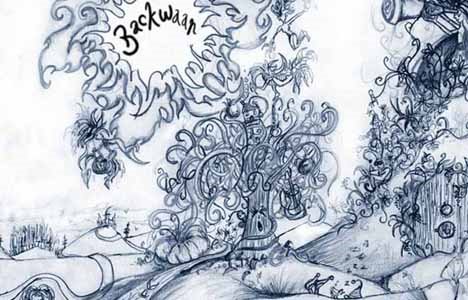
Memory is often criticized within the art world as being too vague a term, are you interested in a specific genre or type of memory and how do you explore this?
I’m interested in the small and the personal, the unseen moments that shape us and make us unique. Christian Boltanski called this, “little memory” and contrasts it to the large collective memory of history. I like to explore the fragility of this type of memory and the emotional response it generates. I often do this through the use of objects that have fragments of a story for the viewer to investigate which then, hopefully, lead to a series of thoughtful personal associations.
Is your work at all autobiographical, are the memories involved generic or personal to you?
When I use objects that have a memory or history attached to them then they tend to be objects that are removed from me because I actually find it quite restrictive to have all the facts. I like the idea of mixing truth and fiction, to build a narrative from a suggested story and to exaggerate elements that I am drawn to. When there are autobiographical aspects to my work I think they come through in a more subtle way – like the use of peacock feathers on the reclaimed bed. As a child I remember thinking these feathers were almost mystical in their beauty and longed to possess one. It was then an intuitive choice of material when making the bed piece with its connotations of desire, and extravagant beauty.
The starting point for a specific work tends to be an object or material that I have been drawn to and felt compelled to acquire. The finding of these inspirational starting points or ingredients to a piece I find almost as exciting as creating the work itself.
In general though inspiration comes from many sources, an emotive piece of music, a visually evocative David Lynch film, other artists work, or emotions or moments in my own life that are particularly palpable. A lot of the time I think its just about taking a moment and looking twice at something you may otherwise pass by in life. Stopping and really seeing the beauty in something ordinary.
It’s the contradiction that all things are constantly deteriorating and yet at the same time they are undergoing a process of enrichment by the stories and physical imprint that the environment and our lives places upon them. Its raises interesting questions about the value we place on the aging process I think.
If you could exhibit one piece anywhere, where and what would you exhibit?
Why? What does the relationship between the two mean?
I’d love to make a site-specific work for an amazing space like Palazzo Fortuny in Venice. To date I have tended to make pieces in isolation of their surroundings but an interior is like a giant object really and I’d love to spend more time considering that aspect in my work.
Within memory, which sense would you describe as the most evocative?
Smell I think. Maybe I should do something with that . . .
At the moment I’m pretty focused on completing works for the show I have coming up this summer in Notting Hill. Its my first solo show and so I’m very excited but it does mean lots of time devoted to organising and publicising it. When the show is done my main focus will be continuing an exciting collaborative project with another artist, Dean Melbourne, based on a novella called “The Ebony Tower” by John Fowles. That’s going to be a great show so watch this space!
What is the most important thing for the audience to experience when viewing and taking part in your work?
Its really important for me to create a sense of intimacy for the viewer. I think in doing this people engage more with a work and are more likely to go further with it and a re more likely to go further with it. i try to dot his by adopting objects or projecting ideas which express and articulate something private.
ihope they also pick up a sense of duality with the work- life and death, present past, me and you, things disclosed and kept hidden.
Mostly I hope they accept the invitation to go on a journey with me.


Thanks Becky!
ReplyDeleteFor more info on the show Traces and Testament: http://www.artrabbit.com/all/events/event/17404/traces_and_testament
the ageing process that you talk about sounds a lot like Wabi Sabi
ReplyDeletehttp://en.wikipedia.org/wiki/Wabi-sabi
While working with a contemporary japanese show at Wolverhampton art gallery I became interested in this theory. I think it finds resonance in the fashion for retro,classic and vintage at the moment. My obsession with vintage bicycles is fuelled by the same aesthetic value.
great insight!